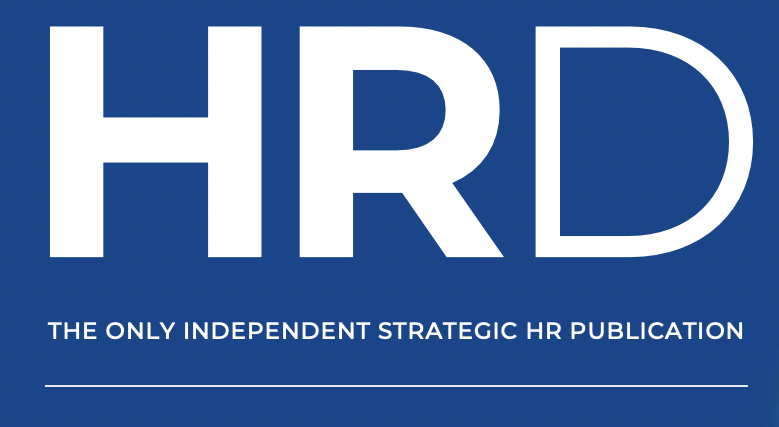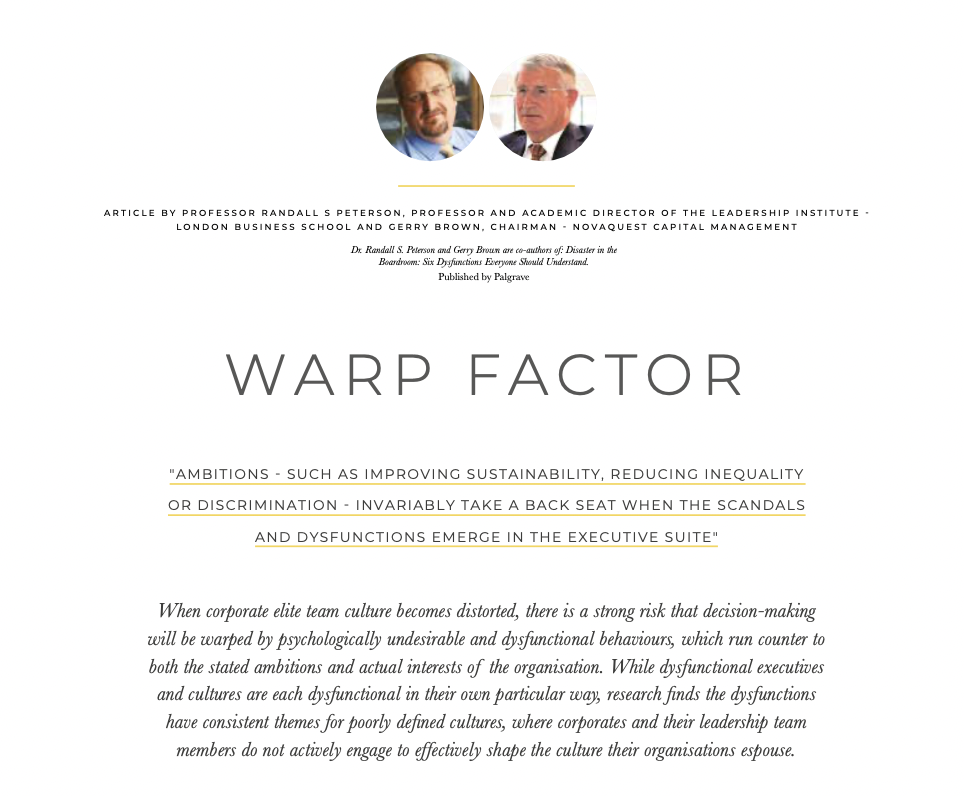
Warp Factor

theHRDirector magazine (October 2022; Issue 216) have kindly invited my co-author for Disaster in the Boardroom Professor Randall S. Peterson and I to contribute our thoughts – this time upon issues surrounding boardroom culture and diversity. For copyright reasons, I can’t post this article but, instead, wanted to share a few key points from our research and analysis regarding “culture” that underpins our article.
Our review of the research, actual scandals, and board responsibilities revealed six different types of Boardroom scandals. Inequality tends to either increase or get more starkly revealed during these times:
- Subordinate (to management) Boards that cause Lack of Independence from Management
- Bystander Boards that cause Diffusion of Responsibility
- Imbalanced Boards caused by Missing Key Voices
- Distended Boards caused by Cultural Amplification
- Bureaucratic Boards that cause Rule-Bound Cultures
- Conforming Boards that cause Groupthink
The six dysfunctions framework our research uncovered are applicable to any corporate or executive group that makes consequential decisions. Of course, such dysfunctions are not limited by nationality, geography, culture, sector, or industry.
Having discovered, identified and codified these dysfunctions, we would argue that regulatory codes of conduct in most of the world have anticipated much of this and do what they can to reduce these risks.
Our position is that they are not sufficient to stop board disasters or change executive mindsets. NOT because the rules are bad or insufficient, but because we are dealing with issues of behaviours and culture that cannot really be directly or properly legislated.
By applying our focus in our book and also this article upon the underlying psychological causes of board ineffectiveness, we suggest that there are a handful of strategies that have solid research backing as effective means for changing culture. Obviously, this helps deliver better outcomes generally but also addresses issues of real or perceived inequality. Our suggestions include:
- Measure it: there are effective measures to look at culture, such as whether it is competitive or cooperative?
- Be pre-emptive: think about your culture BEFORE you engage organizational change, will it help or hurt this change?
- Hold individual directors to account for their behaviour.
We were delighted to be feature in issue (216) of theHRDirector (“the independent, thought-led publication for Senior HR Practitioners”) and, as a courtesy, mention this offer from them: “If you find value in their content and would like to receive their print edition each month, they can offer you a £50 discount when you Subscribe in Print by using the promotional code CONTRIBUTOR. Digital Subscriptions are also available.”
